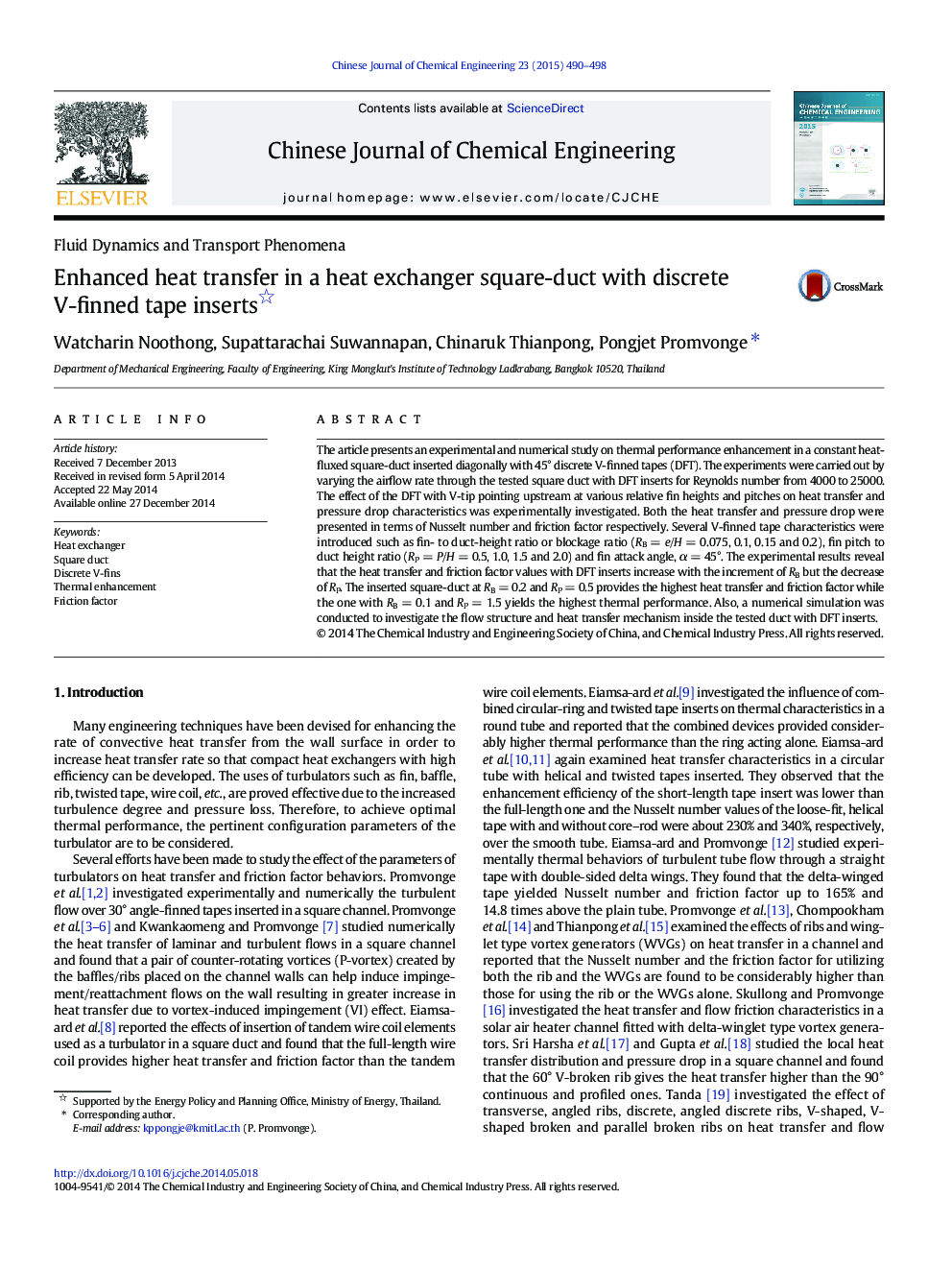| Article ID | Journal | Published Year | Pages | File Type |
|---|---|---|---|---|
| 167236 | Chinese Journal of Chemical Engineering | 2015 | 9 Pages |
The article presents an experimental and numerical study on thermal performance enhancement in a constant heat-fluxed square-duct inserted diagonally with 45° discrete V-finned tapes (DFT). The experiments were carried out by varying the airflow rate through the tested square duct with DFT inserts for Reynolds number from 4000 to 25000. The effect of the DFT with V-tip pointing upstream at various relative fin heights and pitches on heat transfer and pressure drop characteristics was experimentally investigated. Both the heat transfer and pressure drop were presented in terms of Nusselt number and friction factor respectively. Several V-finned tape characteristics were introduced such as fin- to duct-height ratio or blockage ratio (RB = e/H = 0.075, 0.1, 0.15 and 0.2), fin pitch to duct height ratio (RP = P/H = 0.5, 1.0, 1.5 and 2.0) and fin attack angle, α = 45°. The experimental results reveal that the heat transfer and friction factor values with DFT inserts increase with the increment of RB but the decrease of RP. The inserted square-duct at RB = 0.2 and RP = 0.5 provides the highest heat transfer and friction factor while the one with RB = 0.1 and RP = 1.5 yields the highest thermal performance. Also, a numerical simulation was conducted to investigate the flow structure and heat transfer mechanism inside the tested duct with DFT inserts.
Graphic AbstractTest section with DFT.Longitudinal streamlines in square duct with DFT at Re = 10,000, RB = 0.1 and RP = 1.0Nux contour and streamlines in streamwise plane at Re = 10,000 for DFT with RB = 0.1 andRP = 1.0The maximum of heat transfer and pressure drop from the DFT inserts are found at the highest RB but at the lowest RP. The DFT at RP = 1.5 and RB = 0.1 yields the highest thermal enhancement factor of about 1.69 at the lowest Re. The DFT provides two paired-longitudinal counter-rotating vortices along the duct that help to increase turbulence intensity. The mechanism of heat transfer enhancement is the impingement/reattachment flow of the longitudinal vortex flows.Figure optionsDownload full-size imageDownload as PowerPoint slide
